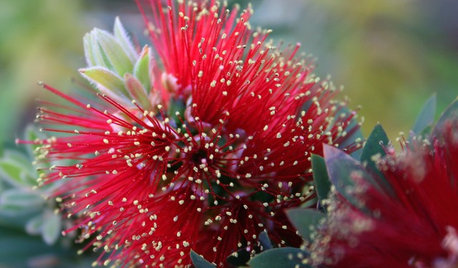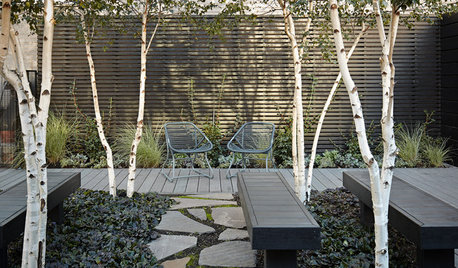Spacing of dwarf fruit trees
mrzeigler
13 years ago
Related Stories

GARDENING AND LANDSCAPINGCrazy for Fruit Trees
Whether a single citrus or a mini apple orchard, even the smallest landscape space can bear deliriously delicious fruit
Full Story
EDIBLE GARDENSHow to Grow 10 Favorite Fruit Trees at Home
Plant a mini orchard in fall, winter or early spring to enjoy fresh-off-the-tree fruit the following year
Full Story
FARM YOUR YARDIf You Have Room for Only One Fruit Tree ...
Juice up a small garden with one of these easier-care or worth-the-effort fruit trees for a mild climate
Full Story
GARDENING GUIDESGreat Design Plant: Velvety Dwarf Bottlebrush Beckons a Touch
Brilliant red blooms and inviting textures will capture your heart, but the low maintenance and small size will win over your practical side
Full Story
GARDENING GUIDESGreat Design Plant: Grow Blueberries for Their Fruit and More
Eastern gardeners should consider growing blueberry plants for their delicious fruits, bee-friendly spring blooms and brilliant fall foliage
Full Story
EDIBLE GARDENSHow to Add an Apple Tree to Your Edible Garden
Readily available, beautiful and fragrant, apple trees offer four-season interest along with crisp, juicy fruit
Full Story
SIDE YARD IDEASNarrow Trees for Tight Garden Spaces
Boost interest in a side yard or another space-challenged area with the fragrance and color of these columnar trees
Full Story
LANDSCAPE DESIGN5 Ways to Use Trees to Create a Sensational Garden Space
Trees define spaces in multiple ways and bring a layer of shade and intrigue to the landscape
Full Story
ENTERTAININGEye-Catching Centerpieces Beyond Flowers and Fruit
Use your imagination to create a tableau that reflects your surroundings, creates dramatic tension or elicits surprise
Full Story
FALL GARDENING5 Fall Fruits You Can Grow in Containers
Brighten your porch or patio with a potted pomegranate, kumquat, blueberry bush or another great fall fruit
Full StoryMore Discussions








Dan _Staley (5b Sunset 2B AHS 7)
brandon7 TN_zone7
Related Professionals
Grand Haven Landscape Architects & Landscape Designers · Andover Landscape Contractors · Bainbridge Island Landscape Contractors · Braintree Landscape Contractors · Broomfield Landscape Contractors · Deer Park Landscape Contractors · Red Oak Landscape Contractors · Shaker Heights Landscape Contractors · Ft Washington Siding & Exteriors · Newington Siding & Exteriors · Richmond Siding & Exteriors · Centennial Decks, Patios & Outdoor Enclosures · Hampton Bays Decks, Patios & Outdoor Enclosures · Lauderdale Lakes Decks, Patios & Outdoor Enclosures · Tomball Decks, Patios & Outdoor EnclosuresDan _Staley (5b Sunset 2B AHS 7)
brandon7 TN_zone7
ken_adrian Adrian MI cold Z5
lucky_p
gardengal48 (PNW Z8/9)
Dan _Staley (5b Sunset 2B AHS 7)
ken_adrian Adrian MI cold Z5
brandon7 TN_zone7
Dan _Staley (5b Sunset 2B AHS 7)